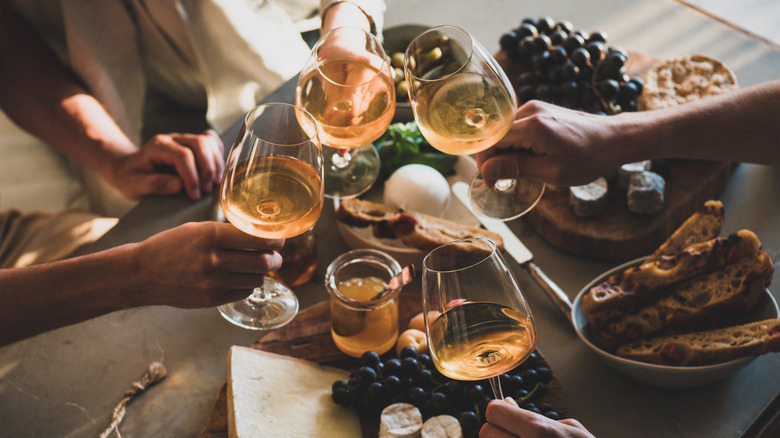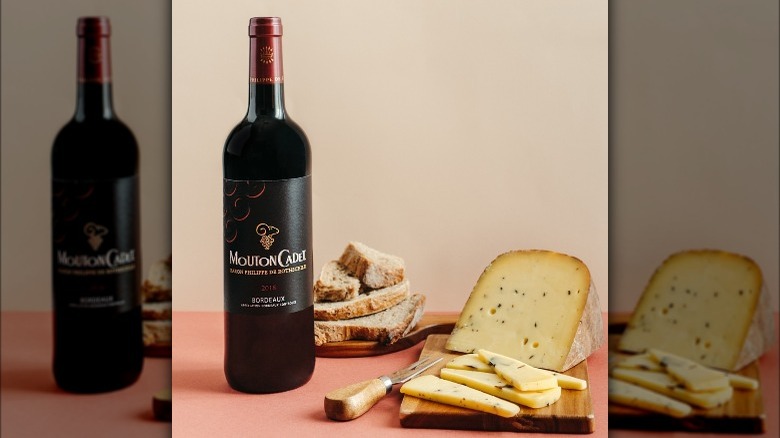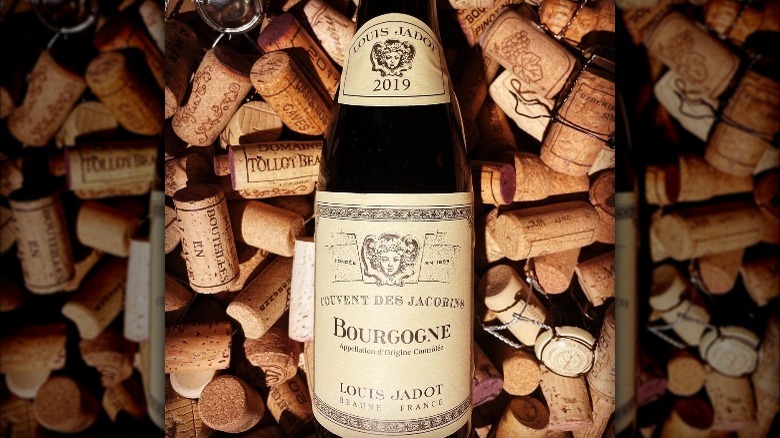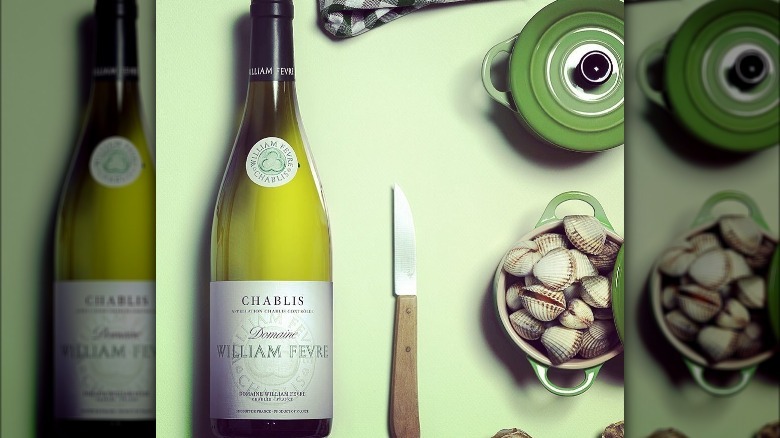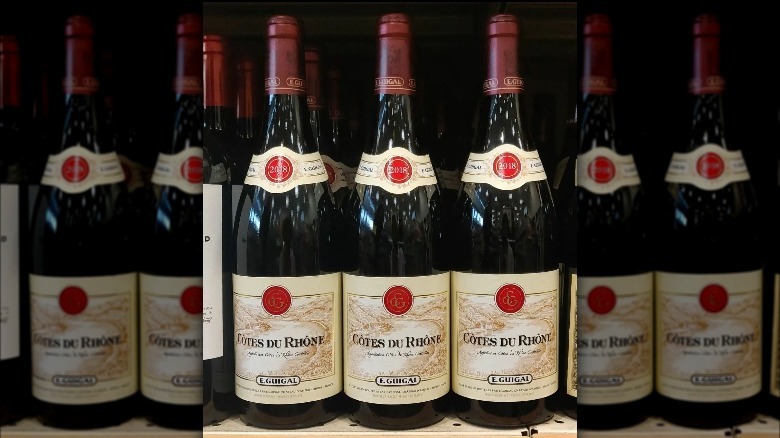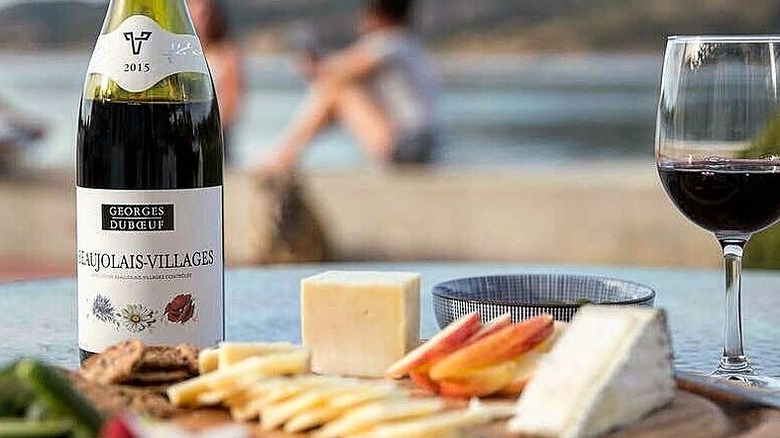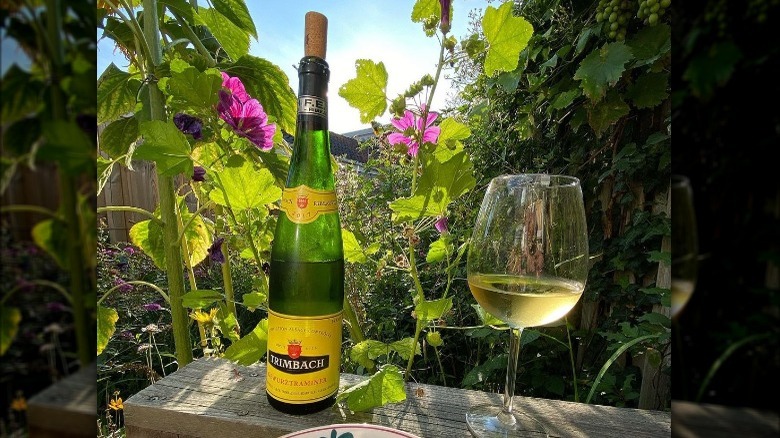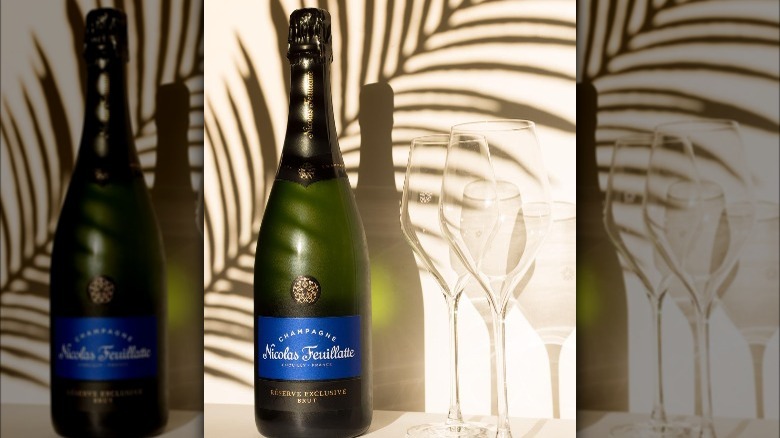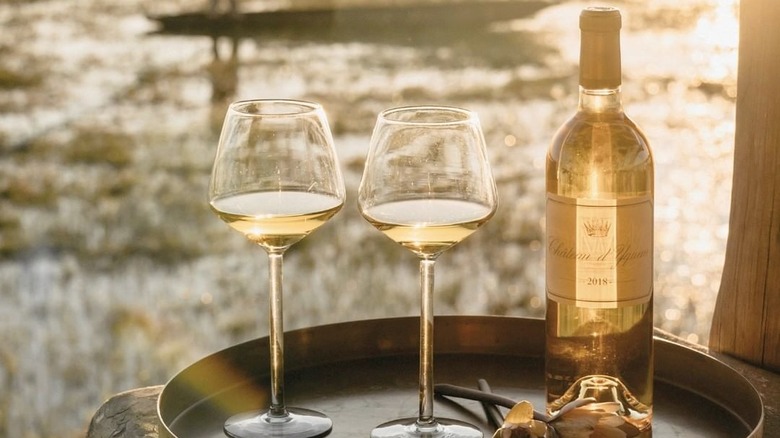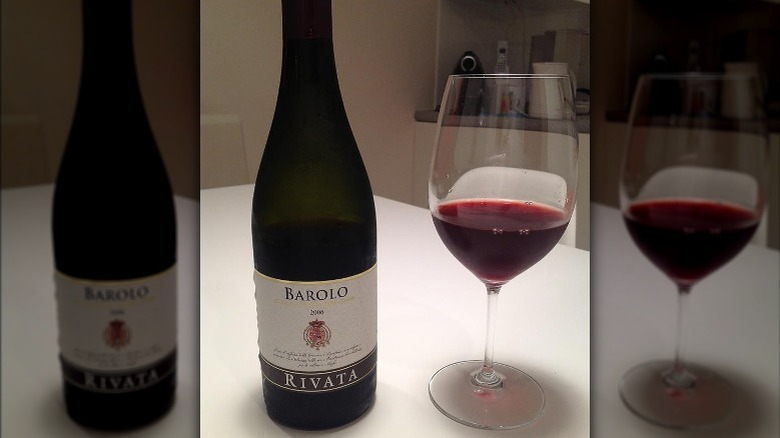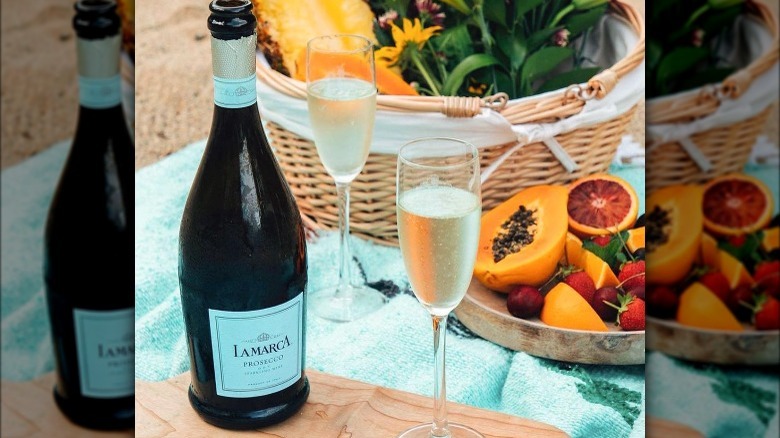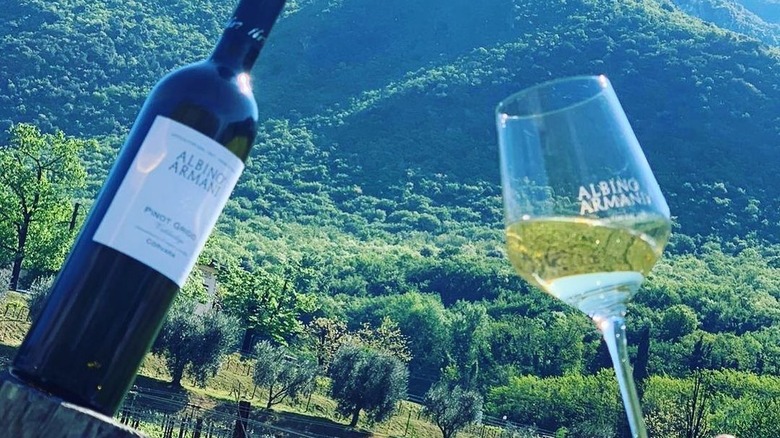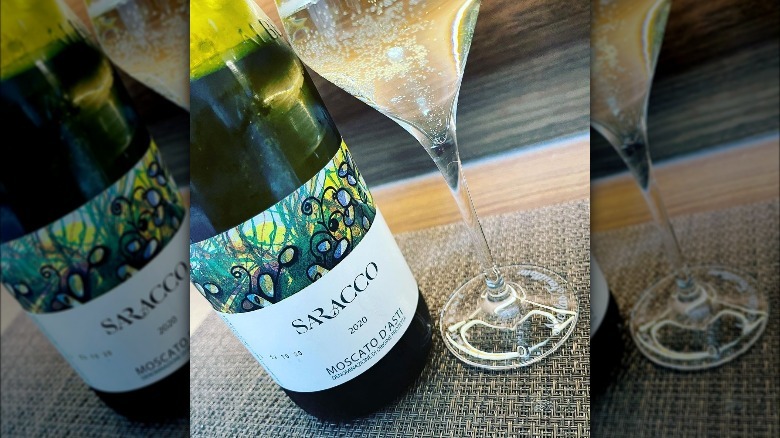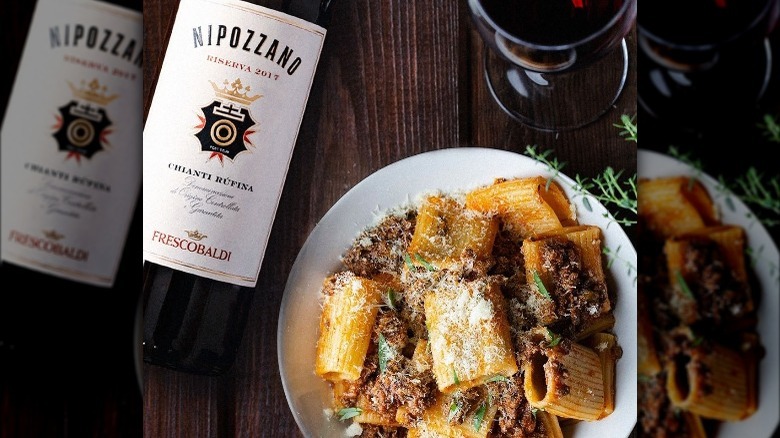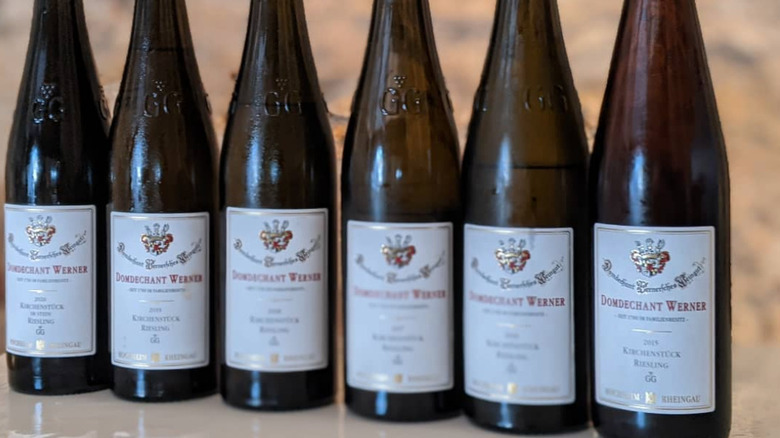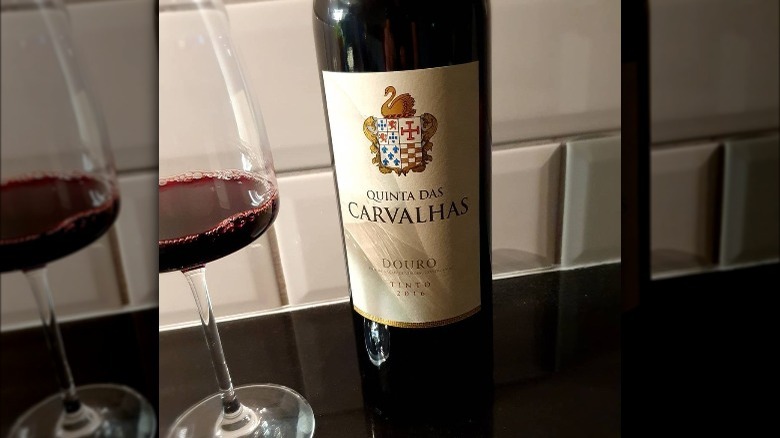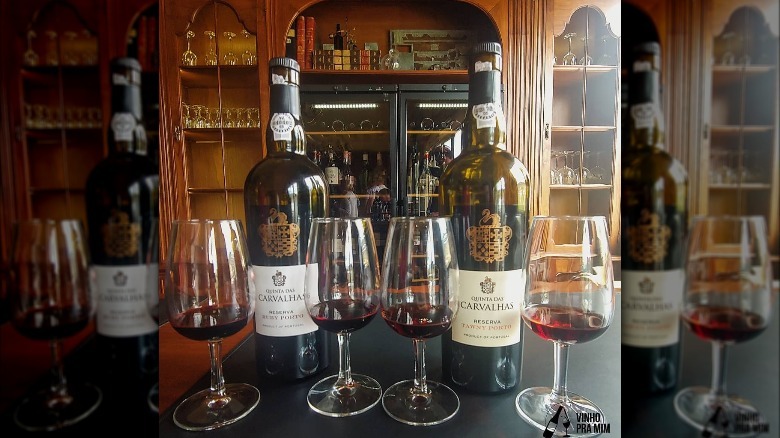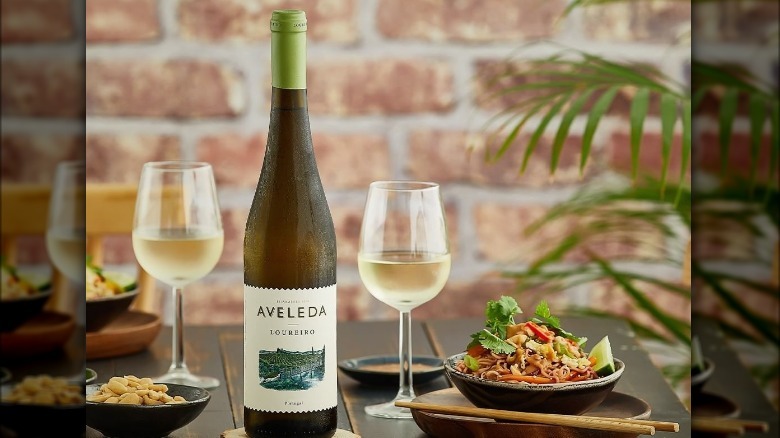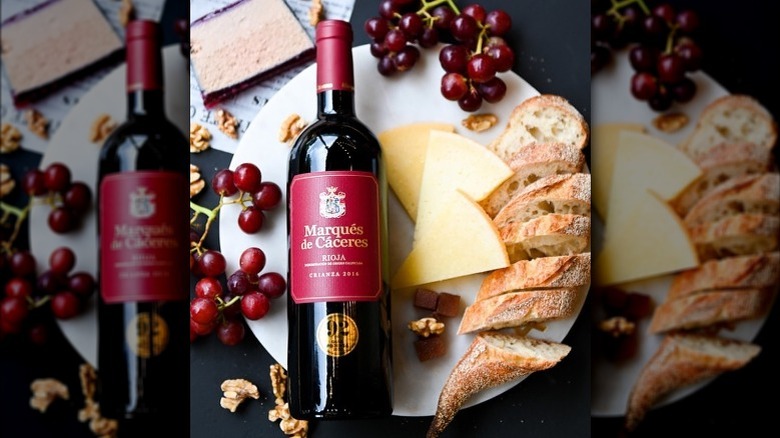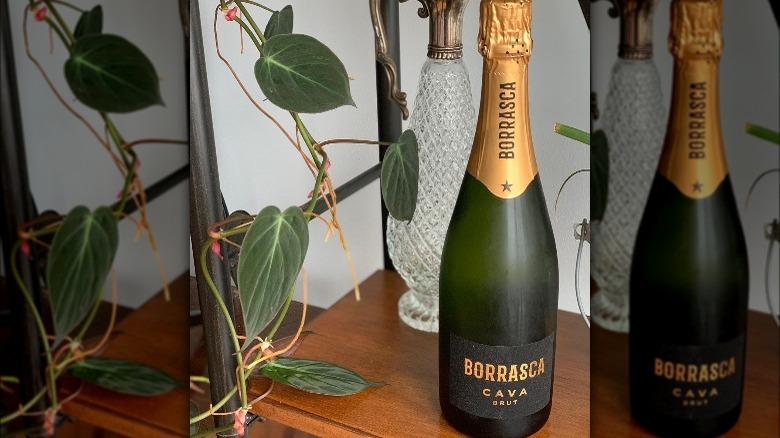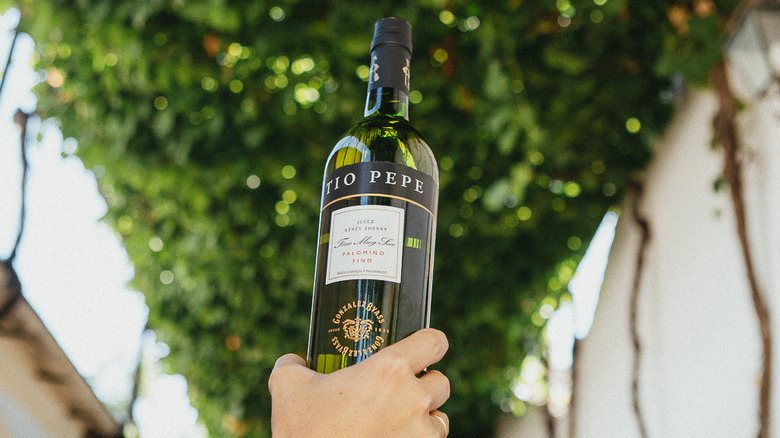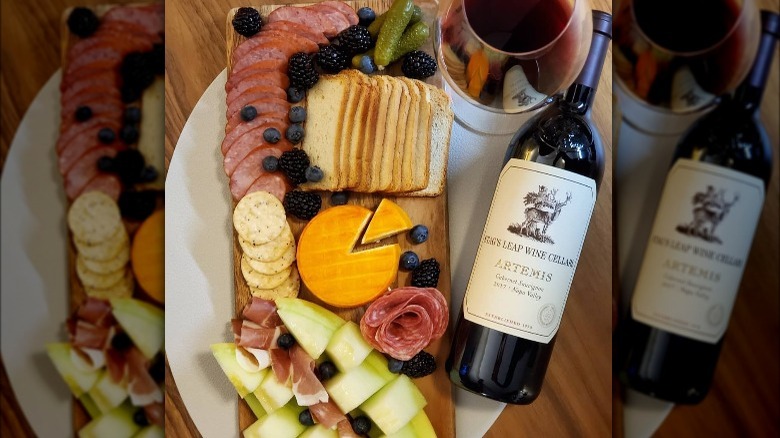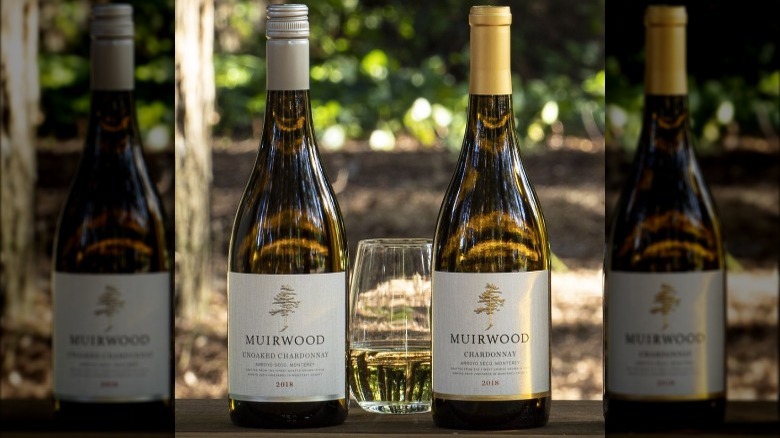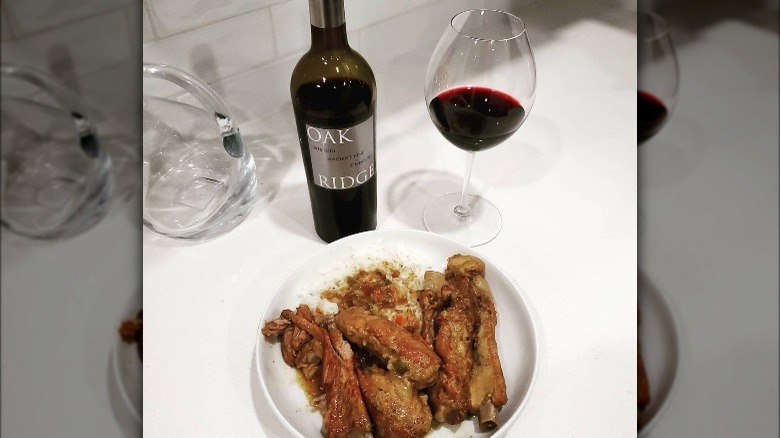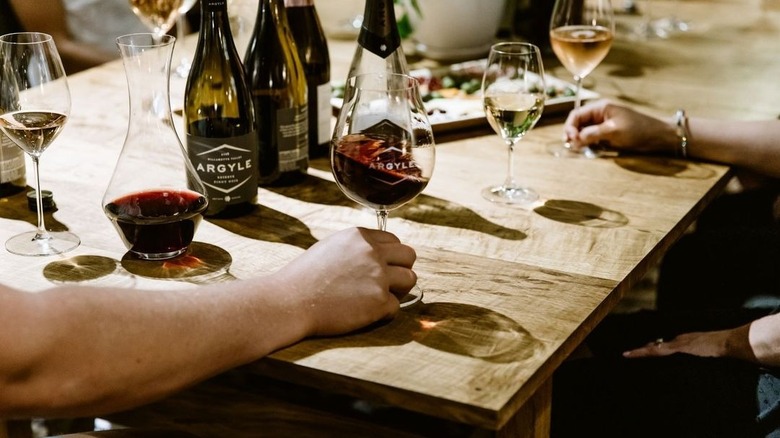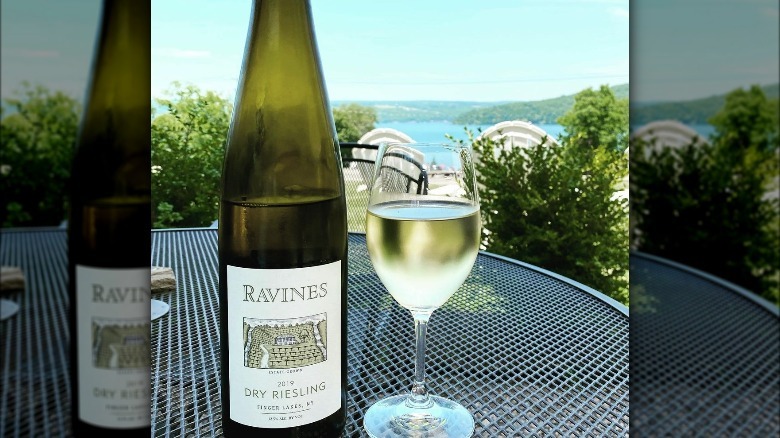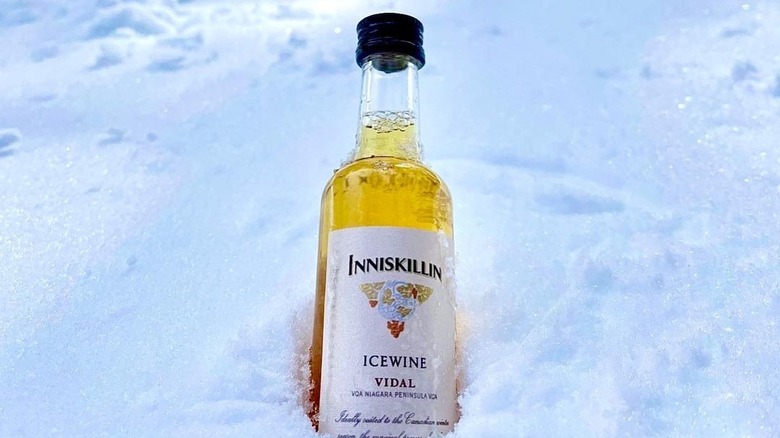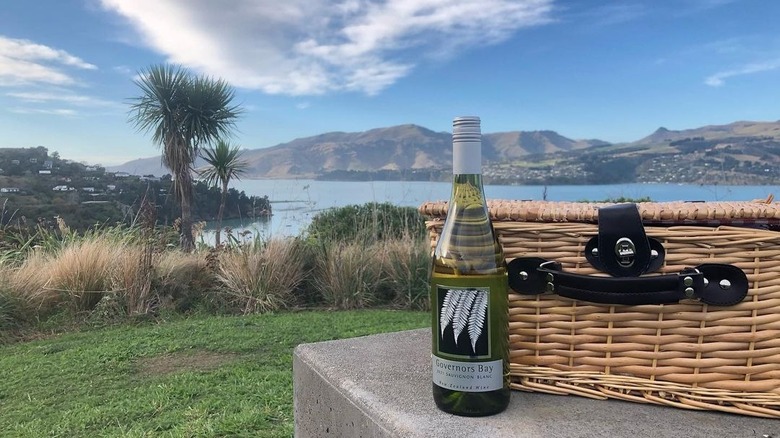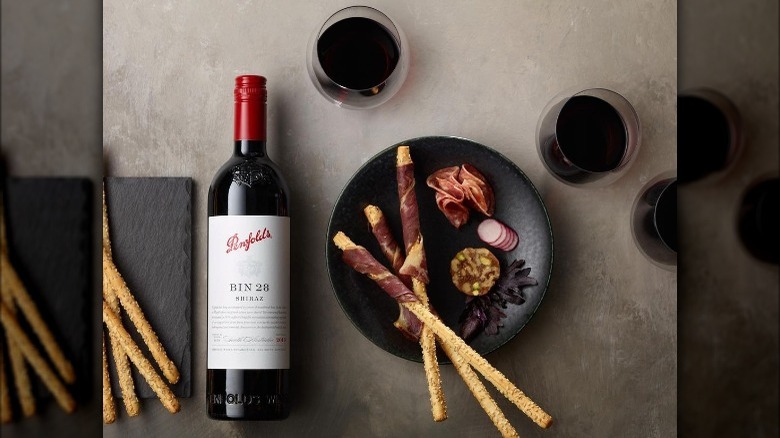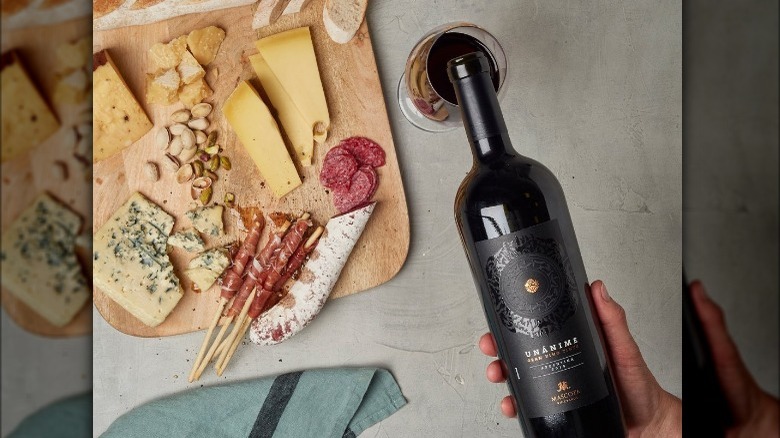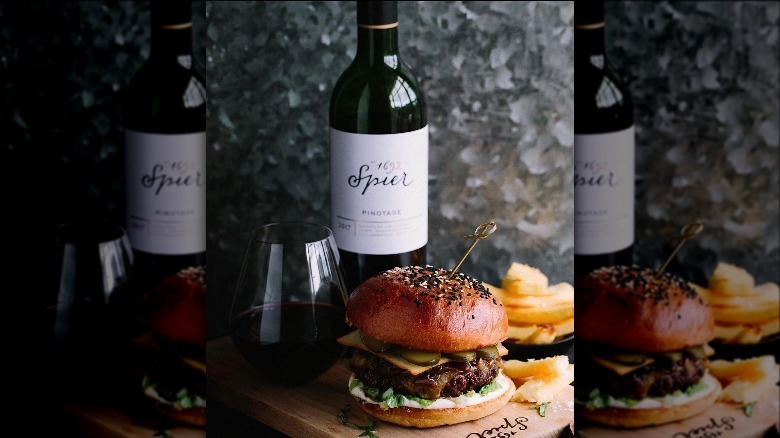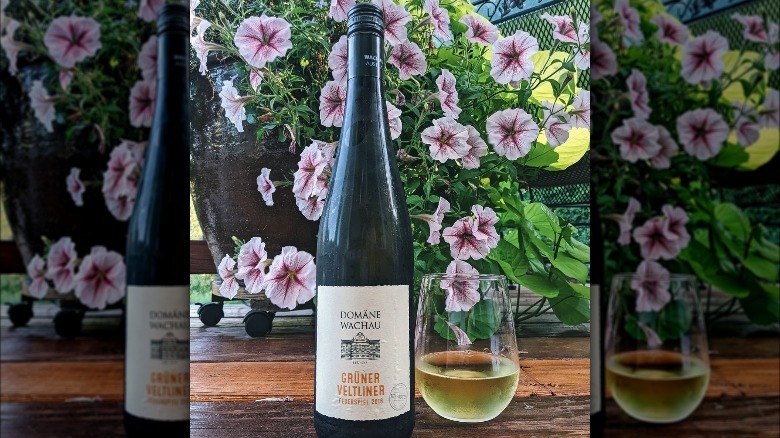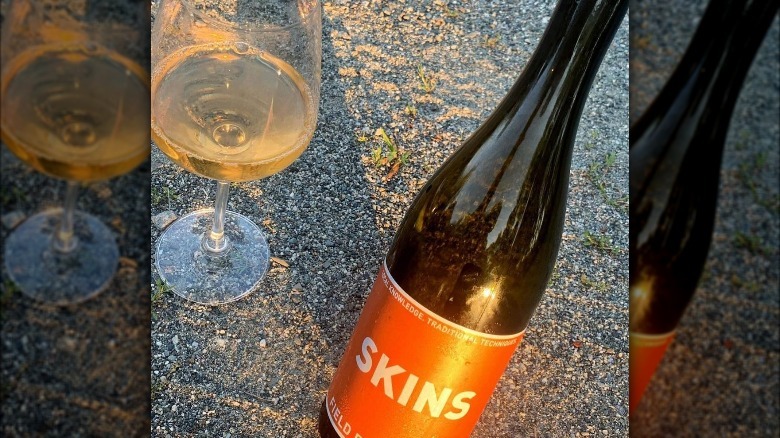32 Classic Wines For Beginners, Explained
Wine comes in a range of colors, styles, and price points. If you're ready to take a step away from Two Buck Chuck and fruity wine coolers, it can be intimidating to know where to start. Sure you could join a wine club, enlist a wine consultant, or ask for advice at your local wine shop, but it's also totally manageable to tackle the task on your own — thanks to our comprehensive selection.
Exploring the vast world of wine is an endless endeavor that can quickly become overwhelming if you have no base for your decision process. We've outlined our top wine picks from regions around the world to set your journey in motion. From the historical origins of wine to modern producers who are transforming the market, you'll be well on your way to becoming a wine expert — or at least figuring out what you like.
By no means is it necessary to drink every bottle on this list, but if you try a few a month, you'll get through it within a year. If you want to keep it moderate, begin with a handful of bottles from different countries and go from there.
Bordeaux red
Very few wine regions have the global recognition of Bordeaux. Situated in southwest France with an estuary splitting it into a left and right bank, the name is synonymous with fine wine. According to Wine Folly, red wine makes up more than 90% of the output, but white wine and bubbles are also part of the production.
Although merlot saw a dip in sales in the decade and a half following the 2004 release of "Sideways," due to the lead character's infamous line, "If anyone orders merlot, I'm leaving" (per NPR), the grape still reigns in Bordeaux. Making up two-thirds of the region's red vineyards, it is an indispensable element of some of the world's most iconic wines, such as Petrus (via The Wine Cellar Insider).
The other red grapes that make up what is commonly referred to as a Bordeaux blend are cabernet sauvignon, cabernet franc, as well as malbec and petit verdot in lower amounts. The various grapes are combined to create a balanced flavor, producing wines that are revered for their ability to age for decades. The profile is highly esteemed and regions around the world make their own adaptations of the Bordeaux blend, known as Meritage in North America.
For a smooth entrance to the vast selection of Bordeaux, try a bottle of Mouton Cadet red.
Burgundy red
Another big shot name in the business, Burgundy in east-central France is considered the home of the pinot noir grape. Given its international cachet, you could easily be tricked into thinking that all wines from here are out of reach. And while some of the world's most expensive wines are from Burgundy (via Bloomberg), there are various categories known as appellations that are more accessible to the average drinker.
Burgundy red wine is almost exclusively made from pinot noir, though gamay is permitted. Pinot is notoriously difficult to farm, but patient growers are rewarded with alluring aromas and flavors. Lighter styles showcase vibrant berries and cherries, while more complex bottles offer notes of spice, earth, and smokiness. Pinot noir is a favorite among people diving into the world of wine, as the low tannins and fruity palate are a winning combination. Much like Bordeaux, Burgundy reds can age for decades, racking up hefty prices at auction houses. Nonetheless, an intro-friendly wine from a regional appellation will be easier on your wallet and a smoother transition into the style.
Taste Louis Jadot's Bourgogne Pinot Noir for a pleasantly fresh, fruity, and spiced wine to pair with your next roast chicken dinner.
Chablis
Although Chablis is part of the larger Burgundy wine region, it stands out on its own. If you're drinking Chablis, it can only be chardonnay, though its qualities distinguish it from other styles of the same grape you may have tried.
Wine descriptors can sometimes feel a bit far-fetched, and minerality is one term that has received plenty of pushback from the industry (via Wine-Searcher). Although a scientific explanation as to why some wines taste like chalk, rocks, flint, or wet stones has been rejected as implausible, flavors that highlight crisp, fresh acidity are undeniable. While the style of any given Chablis wine varies depending on the ripeness of the fruit, fermentation, aging, and whether or not oak barrels are used, the region's wines are known for their vibrant acidity.
If your wine journey begins with food, be sure to pair a bottle of Domaine William Fèvre Chablis with oysters on the half-shell, sushi, or light poultry dishes. As Wine Folly points out, thanks to the zingy citrus flavors, white flowers, and subtle fruit, Chablis is also the ideal contrast for cream-based preparations.
Southern Rhône red
Blended wines have a vast potential by allowing winemakers to avoid the pitfalls of putting all their eggs in one basket — or in this case, all their grapes into one wine. By growing an assortment of grape varieties, there's a good chance of producing an excellent wine regardless of the yearly conditions. In fact, in France's Southern Rhône valley, wines labeled as Côtes du Rhône can include dozens of varieties in the blend.
Nonetheless, the main players tend to be grenache, syrah, and mourvèdre, aka the GSM blend. This popular trio has found its way to cellars in Spain, Australia, and California, and with good reason (via Enobytes). Juicy layered fruit flavors are complemented by notes of herbs, spices, and a fairly hearty body. While these wines aren't necessarily the top choice for a poolside sipper (the alcohol level tends to run high), they are an excellent match for food. The best part? Basic Côtes du Rhône wines are very affordable and offer an excellent price-to-quality ratio. If you develop a soft spot for the region, it contains endless rabbit holes or subregions and producers to dive down.
For a reliable and consistently flavorful option, try Guigal's Côtes du Rhône rouge.
Beaujolais
Technically a part of Burgundy but distinct enough to have its own appellations and style, Beaujolais is a perfect wine for beginners. The most famous version is Beaujolais Nouveau, a young wine bottled early and released on the third Thursday in November, as Wine Folly explains. Its youth paired with the fruit-forward gamay grape and a typical vinification called carbonic maceration produce an easy-drinking wine with juicy berry flavors and the occasional aroma of bananas and bubble gum.
If you're looking for something slightly more complex and don't mind waiting a few more months for the latest bottling, look for Beaujolais-Villages or Cru Beaujolais wines, which are produced following more traditional winemaking techniques. A lighter body and high acidity make Beaujolais wines an excellent complement for food. From Thai dishes and heartier seafood to vegetarian recipes and even dessert, these fun and flavorful wines shine.
For a piece of history available year-round, try a Beaujolais-Villages by Georges Dubeouf, the original creator of the world-famous Beaujolais Nouveau style (per The New York Times).
Alsace gewurztraminer
For a quick way to highlight the range of flavors possible in white wine, try a bottle of gewurztraminer from Alsace. While the grape is most commonly associated with this part of France (which Wine-Searcher calls its spiritual home), it likely originated in Germany, Austria, and South Tyrol in Italy.
There's nothing quite like this heady aromatic grape which boasts flavors of tropical fruit (lychee, pineapple, melon, apricot, etc.), spices (gewürz means spice in German), and roses (via MasterClass). The wines can be dry, off-dry, and outright sweet, the latter sometimes produced with late harvest fruit that contains a desirable type of rot — no joke — that infuses a floral honeyed flavor. Perhaps what is most notable about these wines is their ability to pair with certain cuisines that aren't traditionally associated with wine. Spiced Indian, Thai, and other Asian cuisines are prime candidates to serve alongside this wine.
Pour a glass of Trimbach Gewurztraminer for a sensory journey to Alsace.
Champagne
No matter how basic your wine knowledge, you've probably heard of Champagne. Produced in Northern France in a region of the same name, this sparkling wine sets the bar for excellence. You may hear the name thrown around to mean any and all types of bubbles, but if you want to avoid being glared at by aficionados, take note that Champagne is one of a kind.
The prestigious sparkling wine is made per the traditional method which consists of two fermentations: The first produces a still wine and the second occurs in the bottle to create bubbles. Aside from this rigorous process, Champagne is distinguished by the permitted grapes, mainly chardonnay, pinot noir, and pinot meunier (via Comité Champagne).
The latter two are red grapes vinified to produce a white wine labeled as blanc de noirs, which essentially means white from blacks. Meanwhile, blanc de blancs, or white from whites, is used to designate Champagne made from only chardonnay. Blends of red and white grapes are also made, further amplifying the wide range of styles. Creamy bubbles, crisp acidity, citrus and quince, and brioche aromas are among the many flavor profiles of this popular beverage.
If you're just starting out, there's no reason to splurge on a bottle of vintage Champagne. Instead, opt for a non-vintage wine from a reliable Champagne house such as Nicolas Feuillatte Brut.
Sauternes
The Bordeaux region is known for its complex red wines (many of which are beginner-friendly), but the average consumer may be less familiar with its sweet wines. Sauternes is a dessert wine made in the region by the same name, and if you're looking to taste a sweet style, this one is fundamental for expanding your palate. The wine can be made with three white grapes (sémillon, sauvignon blanc, and muscadelle), but the process itself is where things get a little quirky.
The area's location near the Garonne river set it up with optimal conditions for the development of noble rot. While this is indeed a type of fungus, Vinepair highlights the fact that it creates rich and luscious flavors of honey, flowers, and stone fruits, with just the right amount of acidity to prevent them from being cloyingly sweet. The intense flavors and typically hefty price tag will stop you from overindulging, as does the classic 375 ml format. Although Sauternes is primarily served with — or as — dessert, Forbes recommends trying it as an aperitif or with main meals, particularly Asian cuisines.
If you have the budget for it, taste the best with a bottle of Château D'Yquem. For a delicious yet far more affordable option, sip on a glass of Château Doisy-Vedrines.
Barolo
Italy is known for a number of great wines, and Barolo from Piedmont is undoubtedly one of them. The region has UNESCO World Heritage status, and its namesake wine is known as the king of wine (via Decanter). If you are interested in seeing how wine can develop over time, Barolo is a great option. Made from the nebbiolo grape, these wines are intensely tannic in their youth and will dry out your mouth with a single sip (via Wine-Searcher).
That being said, patience yields rewards as the harsh astringency softens and delicate aromas of rose petals and tar (yes, really) find their way into the glass. If you want to scratch the surface of fine wines, Barolo is an obvious choice. Nonetheless, you'll want to seek a bottle aged for at least five years (and preferably more) in order to understand what all the fuss is about. It won't be cheap, but if you're lucky, you'll find yourself invited to a dinner where the Barolo is flowing (we can all dream, right?)
For a good value, pour a glass of Rivata Barolo to pair with a mushroom risotto.
Prosecco
Although prosecco is often thought of as a cheaper alternative to Champagne, the two are in fact quite different. Apart from using different grapes (the former is made with glera), prosecco typically follows a distinct style of secondary fermentation to produce bubbles, known as the Martinotti (or Charmat) method. The range of quality is huge, offering something for every budget and palate. Since 2020, prosecco rosé made with glera and pinot noir is also on the market, truly covering all of the bases.
These Northern Italian bubbles are fresh and aromatic since they are usually fermented in steel tanks, which retain crisp flavors (via MasterClass). Peach, apple, pear, honeysuckle, and melon are common notes, making this sparkling wine ideal as a solo aperitif. Look for variations in sugar that increase in sweetness from minimal brut to extra dry, dry, and demi-sec.
Pop a bottle of La Marca Prosecco for a refreshingly fruity glass of bubbles — without breaking the bank.
Pinot grigio
Pinot grigio (aka pinot gris) is probably one of the first white wines many consumers taste — which is both good and bad. The grape's flavors are fairly inoffensive, but some people perceive them as bland. And given the huge market for it, you're sure to taste some duds. Nonetheless, a well-made balanced pinot grigio is a refreshingly citrusy drink with subtle floral aromas.
It's great for pairing with poultry and seafood, and can easily be sipped on solo, evoking thoughts of a crisp lemonade, as Vinepair notes. If you're still dabbling in the world of wine, an Italian pinot grigio is a pleasant and affordable option to begin your journey. And if you want to see just how much influence land and the processes in the cellar have, compare it with a French pinot gris from Alsace.
Try Albino Armani's Pinot Grigio Delle Venezie to start off your tasting.
Moscato d'Asti
Moscato d'Asti is an excellent introduction to the world of wine thanks to its notable aromas, subtle spritz, and delicate sweetness. Made with the muscat grape (one of the oldest grapes around, according to Wine Folly), it truly lives up to its name with musky flavors complemented by notes of blossoms, peaches, and apricots. The alluring aromas are highlighted in this sweet effervescent wine, which makes it perfect to enjoy on its own, with various dishes, and even with dessert. If you're used to drinking low-alcohol beverages, Moscato d'Asti is a suitable alternative, hovering around 5.5% ABV.
Saracco's Moscato d'Asti offers a pleasant balance of sweet fruitiness and acidity, making it an all-around winner.
Chianti
As the focus of one of cinema's most famous lines uttered by none other than Hannibal Lecter in "The Silence of the Lambs" — "I ate his liver with some fava beans a nice Chianti." — Chianti sure makes an impression on the uninitiated. Thankfully, you don't have to tread into the infamous territory of Hannibal Lecter to enjoy a glass of the famous Tuscan wine.
Produced primarily with the indigenous sangiovese grape, Chianti has a pleasant acidity that makes it an excellent match for food — especially tomato-based sauces. The wines showcase dark fruit flavors of blackberry, plum, and cherries, with an elegant hint of tobacco, herbs, and earth. While there are age-worthy versions, Chianti Classico can be enjoyed shortly after release.
Open a bottle of Frescobaldi's Nipozzano Chianti Riserva for your next pizza or pasta night.
German riesling
Many people assume that all German riesling is overwhelmingly sweet. While some styles are made with late harvest grapes to produce a sweet (yet balanced) result, according to Gismondi Wine, over 90% of what is consumed in Germany is in fact dry. If you're searching for the latter, look for labels with the word trocken, which indicates low levels of residual sugar.
Regardless of whether you like sweeter or drier styles of wine, make it a point to taste a riesling from Germany. The grape is grown in a number of countries, but it truly shines in its homeland. Here, flavors of stone fruit, lime, lemons, jasmine, and even petroleum in aged versions are present in every glass. The bracing acidity makes it an excellent pairing for seafood, poultry, and even pork. Don't turn your nose at off-dry styles either as they are the perfect match for spicy Asian dishes.
Begin your riesling exploration with a dry style by Domdechant Werner Estate.
Portuguese red Douro blend
The caliber of red wine from Portugal is highly impressive and offers plenty of value. The Douro valley is one of the prime winemaking regions of the country, most famously known for its port. However, unfortified styles are also produced using the same grape varieties as the famous dessert wine (via Wine Enthusiast).
Grapes like touriga nacional, tinta amarela, touriga franca, and tinta roriz are among the numerous types that can end up in a blend (via The Best Portugal). The result is bold and richly flavored, with notable tannins and a fuller body that allow these wines to age. If you're on board with Bordeaux, explore a different take at a complex red blend showcasing dark fruits, spices, and floral aromas.
Try a bottle of Quinta das Carvalhas Reserva Douro to experience the rich flavors of these impressive blends.
Port
If you're loving the flavors of the Douro red blend you picked up, take it a step further and follow up with a bottle of port. Among the more famous fortified wines around, port is a blended wine made with a handful of indigenous Portuguese grapes and the addition of brandy (via Imbibe). Although red port gets all the buzz, white port is another fantastic option too.
Color aside, there are a number of styles of port according to the aging regimens. From bright ruby styles to wood-aged tawny, there are enough options to keep you tasting novel wines. The flavor profile varies accordingly, with fruity chocolate aromas in younger wines and nutty caramel notes in older ones (via Wine Folly). Consequently, a range of food pairings is appropriate, from dried fruits, nuts, and cheese, to chocolate desserts, and even smoked meat. Keep in mind that as a fortified wine, port typically has an ABV between 16% and 20% (via Vinepair).
Start your tasting with Quinta Das Carvalhas' Ruby Reserva Port.
Vinho verde
For a lighter style of Portuguese wine, you can't go wrong with Vinho Verde. Don't be fooled by its name — green wine — which refers to the lush northwestern region where the wines are made. Although there are rosé and red versions too, the most popular is a white wine typically made from a blend of local grapes. Depending on the style, these wines can be slightly effervescent with fruity citrus notes and floral aromas, or else a little more complex and rich.
Thanks to its characteristic refreshing nature, Vinho Verde is an obvious choice to sip on a hot summer day, but it works just as well with light dishes, seafood, and snacks. If you're not ready for heavier high-alcohol wines, it's equally suitable since the basic style of Vinho Verde contains 8% to 11.5% ABV (via Alcohol Professor).
Try the ever-popular Vinho Verde by Aveleda for a delightfully vibrant experience.
Rioja
The wines of Rioja in northwestern Spain are among the best the country has to offer, with a range of styles and price points to satisfy beginners and connoisseurs. Here, bottles are labeled based on their aging regimen (in oak barrels) from joven to crianza to reserva to gran reserva. If you're taking your first sip of Rioja, a crianza is a good choice to discover the qualities of the tempranillo grape which dominates the blend at almost 90% (via Rioja DOC).
The region also produces white blends but they can be harder to access since, according to Decanter, they make up less than 10% of production. These Spanish reds are bold and packed with dark fruit flavors (cherries, berries, plums), herbs, aromas characteristic of oak aging (vanilla, leather), and tannins moderated over time in oak.
Enjoy a bottle of Marques de Caceres Rioja Crianza with savory meat or cheese-based dishes.
Cava
Your introductory wine journey should involve plenty of bubbles, and cava is among the best value you'll get. The Spanish sparkling wine is typically produced following the traditional method of fermentation (the same as Champagne), which creates rich nutty flavors and fine bubbles (via Wine Folly). Native Spanish grapes are primarily used in its production (macabeo, xarel-lo, and parellada), providing balanced flavors of citrus, stone fruit, and flowers.
Aside from the delicious flavor, cava is sold at unbeatable prices — without compromising on quality. For more serious styles, look out for bottles labeled gran reserva or cava paraje calificado, which indicate longer aging. As with other types of bubbly, variations in sweetness range from brut nature (very dry) to dulce (sweet).
Borrasca's Brut Cava is a prime example of the quality these wines deliver.
Sherry
This popular Spanish fortified wine comes in a range of styles from dry and salty to sweet and nutty. Dry sherry (aka Xérès) is made using the native palomino grape, while sweeter versions use pedro ximenez and moscatel varieties. Sherry goes through a notable aging regimen which often involves exposure to air (oxidation). Additionally, sherry follows the process of fractional blending, which entails combining small amounts from barrels of various ages (via SherryNotes).
Given the different grapes and methods of production, you can taste dozens of types of sherry without overlapping qualities. The fino style is typically lower in alcohol, at around 15%, and features crisp almond and saline notes, making it an excellent aperitif. On the other end of the spectrum, oloroso sherry sits closer to 20% ABV and displays a dark color that hints at nutty aromas, spices, tobacco, and leather.
Begin your exploration of sherry with an easy-drinking fino by Tio Pepe.
Napa cabernet
It's hard to think of a more iconic American wine than Napa cabernet sauvignon. In fact, as reported by Time, in 1976 it came out on top of French wines in the historical blind-tasting event known as the Judgment of Paris. Once it was clear that Californian wines were recognized worldwide, the industry quickly expanded.
In Napa Valley, cabernet sauvignon makes up almost half of the output. And while many of these wines hold prime real estate in collector's cellars, there are options at all levels. These coveted wines display plenty of fruit notes, with dark berries, plums, currants, and even licorice among the primary flavors. Baking spices and aromas imparted from oak such as vanilla, leather, coffee, and tobacco are also notable (via Decanter).
If you're looking to taste a full-bodied wine with bold notes of fruit and oak, Robert Mondavi's Cabernet Sauvignon is a reliable classic. For more of a splurge and a taste of history, pick up a bottle by Stag's Leap, the winery that made the winning wine in 1976.
California chardonnay
In the same blind-tasting event that turned the world onto Napa cabernet, a chardonnay from California's Chateau Montelena also won high praise (via Time). Regionally, the variety has gone through many stages of evolution, shining as both a bright and light fruity wine and one with luscious aromas and obvious oak aging, as Club Oenologique examines.
The outlet explains that the In Pursuit of Balance movement (IPOB) did wonders to change local and global styles, resulting in the California chardonnays of today which are far more nuanced. With pleasant aromas from the fruit front and center, a light touch of oak is welcome. Peach, pear, apple, and tropical fruit are all present in the mouth, complemented by a crisp acidity or a smooth mouthfeel from subtle oak aging.
Enjoy a bottle of Muirwood Wines Chardonnay to further discover this chameleon grape.
California zinfandel
Zinfandel is undoubtedly another California favorite, though it originated across the Atlantic in Croatia and later Southern Italy. Nonetheless, the grape thrives in California and leaped to consumer popularity during its blush phase of white zinfandel in the '80s, Decanter explains. The red is recognized as a juicy flavor-packed wine with jammy notes of dark fruit, spices, and notable tannins — try it at your next barbecue and you'll see why it's so drinkable.
If you're used to sipping on low-alcohol beers, keep in mind that zinfandel can easily reach 17% ABV (via Vivino). While some bottles can be over the top, a well-balanced wine will go down smoothly. Wine Folly recommends trying wines from Napa, Dry Creek Valley, Russian River Valley, and Lodi for some of California's best.
Serve Oak Ridge's Zinfandel from Lodi as a bold match for a smoky dish.
Oregon pinot noir
Pinot noir is grown around the world, but in the U.S. it has really taken a liking to Oregon's climate and terroir. The primary pinot-growing area of the state is the Willamette Valley, so much so that the region's wineries association motto is "We are pinot noir." Many enthusiasts suggest the valley has overlapping conditions with the grape's homeland in Burgundy, producing wines with comparable characteristics (via Pacific Rim & Co.).
Nonetheless, Oregon pinots are distinct and display elegant notes of raspberries, cherries, earth, and herbs, offering a lighter take than the Californian style. Given the palate range, these wines can be served alongside red meat, poultry, fatty fish, and vegetable dishes.
Argyle Winery in the Willamette Valley makes an excellent pinot noir with delicate aromas and balanced intensity.
New York riesling
Germany isn't the only place highlighting riesling's qualities. New York state — particularly the Finger Lakes — is doing a commendable job as well. Dubbed the mecca of American riesling, the cold winters are no threat to this hardy grape due to the warming effect of the nearby lakes, as Forbes reports.
The grape gained local popularity with the help of European immigrants. Thanks to the tight-knit community of growers and winemakers, the wines have continued to improve over time. According to The Buyer, New York rieslings were traditionally vinified as sweet wines. However, in recent years the trend is turning toward dry styles of this crisp, high-acid grape. For a rich and zesty combination of citrus and stone fruit, try Ravines Wine Cellars' Dry Riesling.
Canadian icewine
Although icewine didn't originate in Canada (Germany has that claim to fame), it is the world's top producer and the only country to make it on a yearly basis (via Wines of Canada). Sure you could freeze any grapes and make some version of icewine, but the real deal is made with grapes that sit on the vines well into winter. According to the regulations, the temperature must be consistently cold for the harvest to begin (via Wine Country Ontario).
Since the grapes are picked late in the season, the sugar levels are high, though a streak of acidity keeps them balanced. Nevertheless, these are sweet wines made for sipping in small quantities — which you'll appreciate considering the high price tag on the labor-intensive product. Since much of the juice has evaporated by the time harvest rolls around, what's left is highly concentrated with rich flavors of stone fruit and spices.
Sip on Inniskillin's Vidal Icewine for a taste of Canadian winter.
New Zealand sauvignon blanc
One of the most easily recognizable styles for wine novices and experts alike, New Zealand sauvignon blanc is known for its aromas of gooseberry, passionfruit, bell pepper, and fresh grass. And while the style has greatly evolved over the last decade, it still displays fruit-forward flavors and a refreshing zestiness. As the small country's star grape (it accounts for almost three-quarters of vineyards), you can bet that there's plenty of experimentation occurring locally.
Across the board, these wines are excellent matches for seafood dishes, salads, and fresh summer meals. Plus, thanks to its vibrant flavor profile, sauvignon blanc is perfect to sip on solo. The Marlborough region is where the grape saw its original rise to fame, but vineyards around the country are taking note and making their own styles too.
Grab a bottle of Governors Bay Sauvignon Blanc for a crisp and fruity taste of New Zealand's finest export.
Australian shiraz
Shiraz is synonymous with Australia in the world of wine, and once you try a glass you'll understand why it's considered to be the country's classic wine. Shiraz is indeed the same grape as syrah from the Northern Rhône valley in France, yet distinct climates, landscapes, and processes in the cellar produce vastly different results.
Down Under, the wines are bold and tannic, with flavors of dark fruits, licorice, chocolate, and spice (via Wine-Searcher). The Barossa Valley is the center of Australian shiraz vineyards, and the densely concentrated wines produced are revered around the globe. Regional styles vary in intensity, and sparkling shiraz is another fun style on the market (via Wine Enthusiast). This is a wine made for hearty meat dishes, strong cheese, and stews.
Penfolds makes some of Australia's top wines, and its shiraz is a must.
Argentinian malbec
Although France is the home base for many of the popular grape varieties today, sometimes their qualities shine better elsewhere. This is the case with malbec, originally from southwest France, though currently, around 70% of global plantings are in Argentina (via Wine Folly). Particularly, in the province of Mendoza, malbec is at its peak, showcasing chocolate and tobacco flavors offset by dark fruits like berries, plums, and cherries.
Unlike the heavily tannic malbecs of Cahors, France, in the South American country, they have a smooth, lush, and velvety texture (via MasterClass). While you could serve a bottle with grilled meat, the subtler tannins make Argentinian malbec a great pairing with burgers, cheese, and charcuterie. Apart from Mendoza, look for wines from the Uco Valley or Salta, the latter home to some of the world's highest altitude vineyards.
A top winery Mascota makes Unanime, a high-end malbec that's well worth tasting.
South African pinotage
Whereas some wine crosses are the product of natural reproduction in the vineyards, others are more deliberate. South Africa's trademark grape pinotage was created around 100 years ago by Professor Abraham Izak Perold, by crossing pinot noir and cinsault grapes. Although it is primarily grown in South Africa, plantings have been successful in a number of countries including Brazil, the U.S., New Zealand, and Israel (via Wine Traveler).
Typically, pinotage doesn't produce light wines, instead showcasing intense notes of dark fruits, spice, smoke, and tobacco. Accordingly, you'll want to pair it with hearty meals and bold flavors to complement the weighty wine. Although pinotage is fairly full-bodied, the fruit and acid prevent it from overwhelming your palate.
Enjoy a glass of Spier Pinotage to discover this novel grape.
Austrian grüner veltliner
The Austrian wine industry owes its success largely in part to grüner veltliner, a white grape that accounts for a significant proportion of the country's vineyards. Ideal for white wine lovers, the grape can be made into light crisp easy-drinking styles or more complex barrel-aged wines.
In all cases, the grape displays a definite herbal note commonly paired with white pepper (via Decanter). Typical citrus notes and a pleasant acidity highlight grüner's drinkability. Although it is commonly bottled solo, riesling blends are popular too — and sparkling sekt is not to be missed either. As Drink & Pair notes, this savory white wine stands up well to plenty of cuisines, from spicy Asian and fatty pork dishes to green vegetables that are hard to pair.
Domaine Wachau's Grüner Veltliner is a favorite among newbies and longtime Austrian wine fans.
Orange wine
Orange wine — more aptly termed skin-contact wine due to its production method — is the perfect example of the saying "what's old is new," per Smithsonian Magazine. Thousands of years ago, when wine was first made in what is now Georgia, it was common practice to dump the grapes (skins and all) into a clay urn (known as a qvevri) buried underground to make wine (via Eataly). The grape skins tinge the juice, resulting in a hue that ranges from pale apricot to deep amber.
Nowadays, the style is largely popular among natural winemakers for its low-intervention process. However, the two elements are not interchangeable, and not all orange wine meets the standards of natural wine. Producers around the globe are experimenting with these wines, while consumers respond with both satisfaction and eye rolls (via The New York Times).
Given that orange wine can be made with any white grape and kept in contact with the skins for as little as a handful of hours to several months, it goes without saying that there is no single feature that describes the style. Nonetheless, tannins are typically more notable than any white wine you might taste, and enhanced complexity is provided by the skins. Not to mention, a 2001 study published in the Journal of Agricultural Food and Chemistry found that skin contact white wines had similar levels of antioxidants as red wines.
Try Skin by Field Recordings to taste how Californian winemakers are exploring the style.
